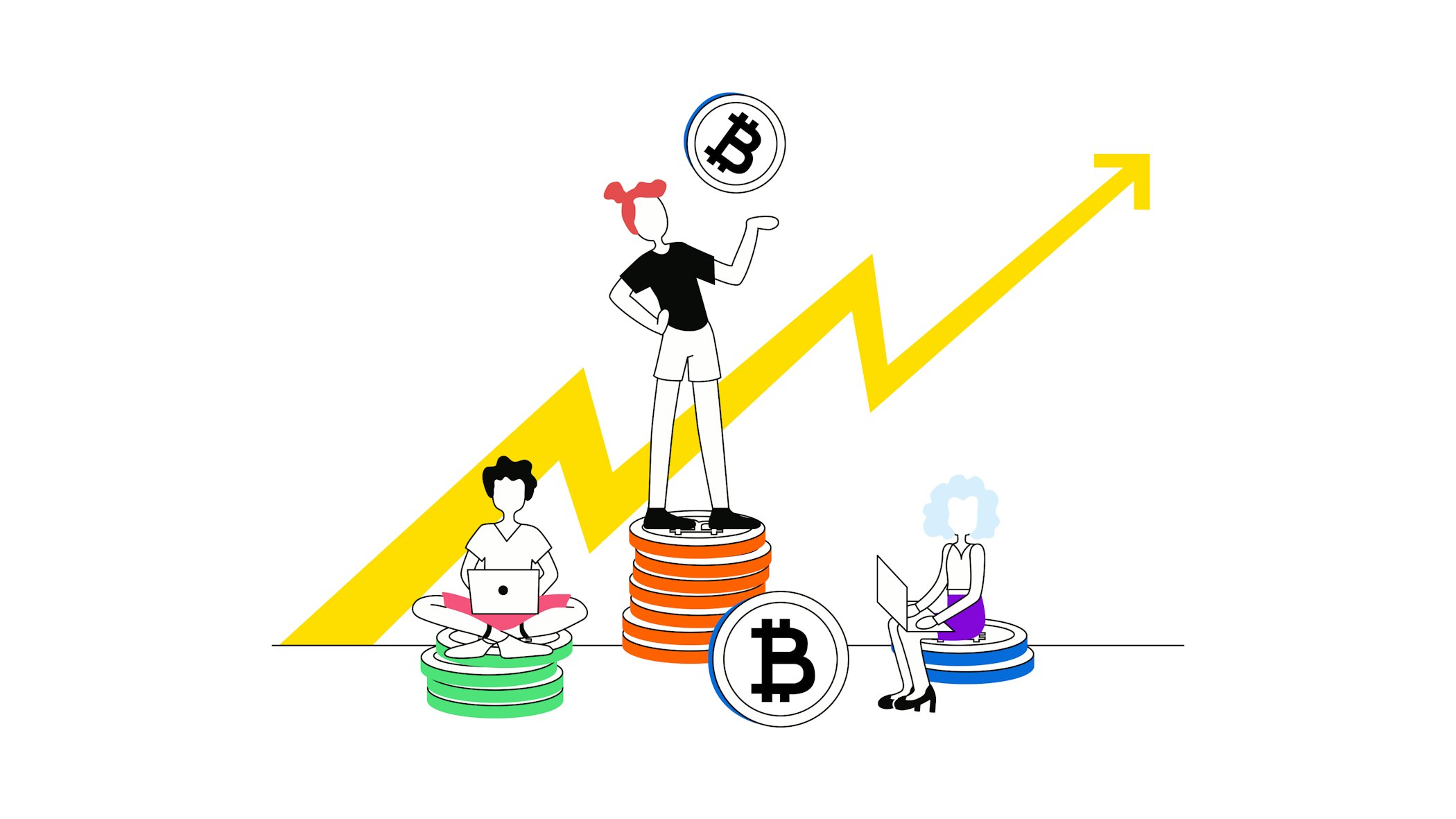
What is market capitalisation (market cap) and why does it matter?
Market capitalisation, or Market Cap, refers to the total value of all issued shares of a cryptocurrency or a company. In this guide, we explain what market capitalisation means, its significance in the crypto market and the different types that exist.
Market capitalisation, or Market Cap, refers to the total value of the coins or tokens generated by a cryptocurrency.
You can calculate the Market Cap by multiplying the current price by the total number of coins in circulation.
It provides a quick overview of a cryptocurrency’s size and importance and serves as a useful tool for evaluating cryptocurrencies.
Cryptocurrencies are categorised by market capitalisation into large-cap, mid-cap and low-cap, each carrying different levels of risk and growth potential.
In addition to market capitalisation, trading volume, liquidity, volatility and other technical and economic factors are crucial for a sound evaluation of a cryptocurrency.
What does market capitalisation mean?
Market capitalisation, or “market cap”, refers to the total value of a company on the stock market. It is calculated by multiplying the current share price by the total number of outstanding shares. It helps classify companies by size – for example, as small-cap, mid-cap, or large-cap.
What does market capitalisation (Market Cap) mean for cryptocurrencies?
Market capitalisation – also called Market Cap – defines the total value of all coins or tokens generated for a cryptocurrency. To calculate market capitalisation, multiply the current price of a single coin or token by the total number of coins in circulation.
Market Cap gives a quick overview of how large and significant a cryptocurrency is and acts as a useful tool for investment decisions. However, you shouldn’t base your investment solely on Market Cap but should also consider other important indicators.
Watch this Bitpanda Academy lesson as video
Watch on YouTubeHow is Market Cap calculated?
The market cap of a cryptocurrency is determined by the current price multiplied by the circulating supply:
Market Cap = Price (X times) Circulating Supply
Coinmarketcap is currently the most popular website to keep track of market cap of cryptocurrencies and to get an overview of how popular each currency is. It also offers the crypto world’s most popular index for all relevant financial metrics for cryptocurrencies.
On Coinmarketcap all prices are calculated by the volume-weighted average of all the prices from different exchanges. Bear in mind that it is important to monitor the circulating supply of a cryptocurrency - not the total supply. After all, it is only the circulating supply that is really available on the market right now.
The market cap of a cryptocurrency more or less reflects the popularity of a coin over a longer term.
Is market cap the best way to measure the popularity of a cryptocurrency?
Even though the market cap of a project is still seen as the most important indicator of relevancy, the concept behind this is often subject to criticism. The reason is that the market cap of a cryptocurrency more or less reflects the popularity of a coin over a longer term.
Large-cap cryptocurrencies are generally considered to be safe crypto investments. These are companies with a market cap of more than $10 billion. Investing in coins with large market capitalisation is usually a conservative strategy. These coins are likely to be less volatile than other cryptocurrencies but still more volatile than traditional assets like stocks.
Mid-cap cryptos are more volatile but also have a lot more growth potential than large-cap cryptocurrencies.
Small-cap cryptocurrencies are often extremely volatile and considered a highly risky investment, albeit sometimes with a lot of potential (short-term) growth. However, be aware that they may also crash, literally from one minute to the next.
New to Bitpanda? Get started today!
Sign up hereAs always with cryptocurrencies, we recommend to do thorough research before investing and consider all vital factors involved. For instance, market cap as a metric doesn’t say much about actual trading volumes over the last couple of hours. Therefore it makes sense to also check Coinmarketcap for the 24-hour trading volume that a cryptocurrency has on different exchanges over a reasonable period and other essential criteria before investing.
Are you ready to buy cryptocurrencies?
Get started nowDISCLAIMER
This article does not constitute investment advice, nor is it an offer or invitation to purchase any crypto assets.
This article is for general purposes of information only and no representation or warranty, either expressed or implied, is made as to, and no reliance should be placed on, the fairness, accuracy, completeness or correctness of this article or opinions contained herein.
Some statements contained in this article may be of future expectations that are based on our current views and assumptions and involve uncertainties that could cause actual results, performance or events which differ from those statements.
None of the Bitpanda GmbH nor any of its affiliates, advisors or representatives shall have any liability whatsoever arising in connection with this article.
Please note that an investment in crypto assets carries risks in addition to the opportunities described above.